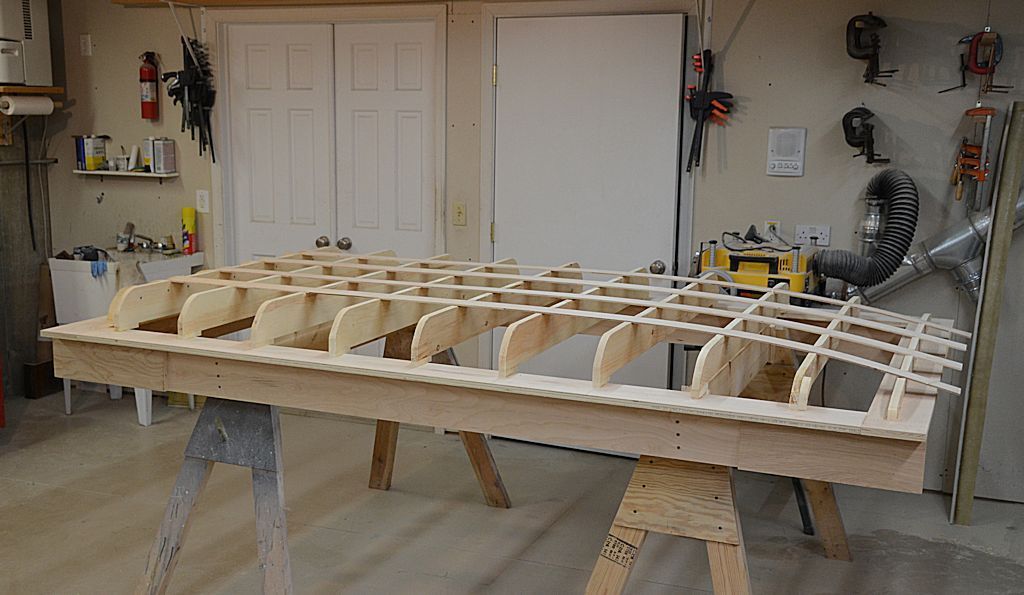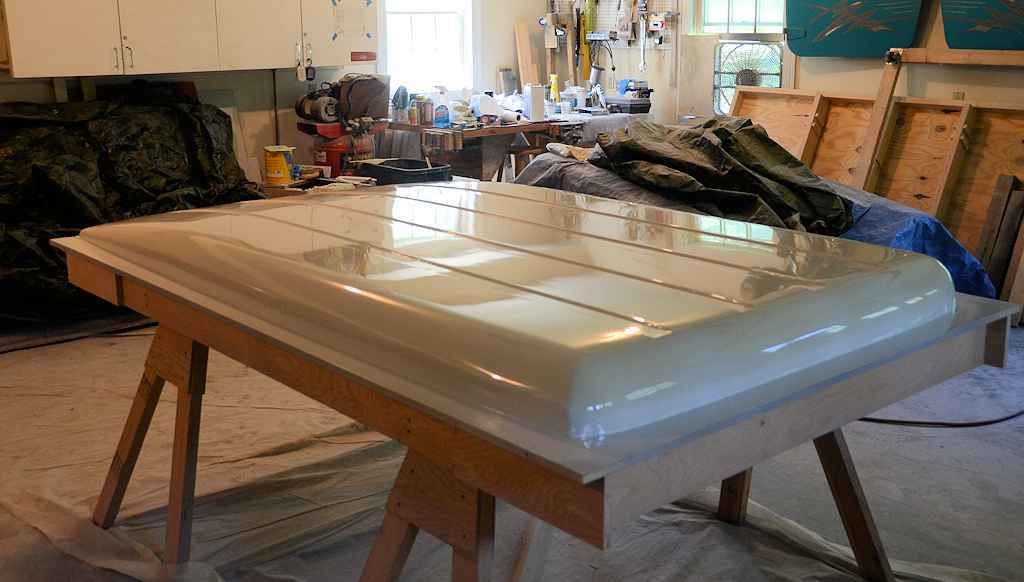Pretty much everything you need to know about building mold masters (plugs) and molding hardtop parts is covered in this thread:
https://www.expeditionportal.com/forum/threads/barn-door-for-jk-factory-hardtops.127687/
I use the same technique one would use for making a stripwood canoe. It's easy to make a very accurate shape that way, the pine strips are easy to shape with a plane and sander and the pine and birch plywood skin is easy to put a fine finish on for mold making.
It's all covered in that thread.
I looked through your thread and wanted to wait until I got through the whole thing before I asked any questions that may be answered in what is now a really long, extensive write-up on the barn door, safari top and many other projects.
In regard to master mold construction, how do you keep your accuracy and precision high, to ensure both sides are exact mirrors of each other? The difficulty to get an exact match is why I am currently planning on using closed cell foam and CNC routing out my design. This way I can integrate the drip rail into the top piece as well? Thoughts?
Also, I searched for alpine windows without much success besides Land Rovers. Any chance you wouldn't mind sharing your donor vehicle for the apline windows and motors for the rear side windows? Land Rovers alpine windows are about $200/window, which makes it cost prohibitive for R&D. Since my roof will most likely be one off (unless I find interest), I am thinking about integrating a recess in the window surround to install the windows as one would with a windshield or maybe have the option that they are pop up, for rear passenger air ventilation.
Lastly, I think I read you are using the factory weatherstripping at the barn door, but what have you found to be the best weatherstrip designs all around, not just at the barn door? I was thinking about an inverted T, shape weather strip which would slide into a groove in the roof panel where they meet the side pieces and on the side pieces where they meet the bed rail, this way the piece would go with the top and squeeze together when attaching the two pieces. To date, I have not seen a manufactured t-shaped weather stripping, however, so unless my search parameters are off, this may not be a good option. Ultimately I just want to ensure no leaks, as best I can, at the joint surfaces.








